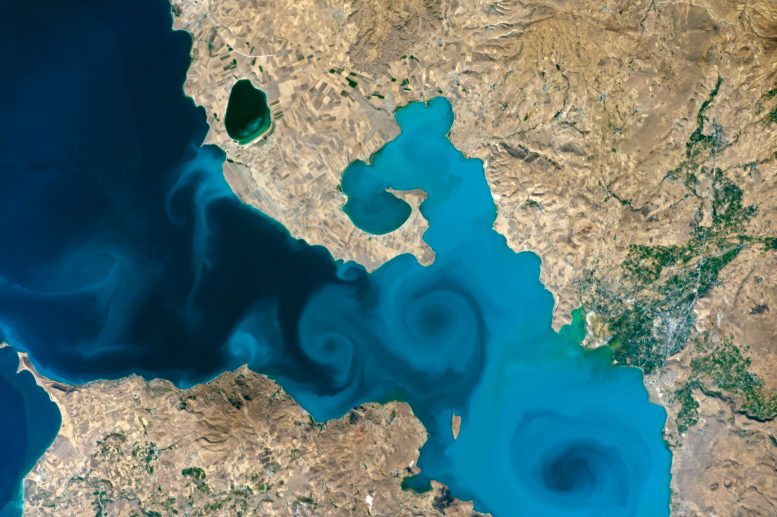
While orbiting on the International Space Station, astronaut Kate Rubins shot this photograph of part of Lake Van in Turkey, the largest soda or alkaline lake on Earth. Generally, soda lakes are distinguished by high concentrations of carbonate species. Lake Van is an endorheic lake—it has no outlet, so its water disappears by evaporation—with a pH of 10 and high salinity levels.
You helped NASA Earth Observatory choose 32 competitors, and now you have chosen a champion. More than 930,000 votes were cast in five rounds, and the winner of Tournament Earth 2021 is a photograph of Lake Van, Turkey. The image was suggested by readers in February 2021 and it was slotted as the #8 seed in the Tranquility bracket. Shot by astronaut Kate Rubins in September 2016, the photo shows part of one of the largest alkaline lakes in the world.
Waters near the city of Erciş (population 90,000) are shallow, but other parts of the lake can be up to 450 meters (1,467 feet) deep. Lake Van water levels have changed by 100s of meters over the past 600,000 years due to climate change, volcanic eruptions, and tectonic activity.
Turbidity plumes, which appear as swirls of light- and dark-toned water, are mostly comprised of calcium carbonate, detrital materials, and some organic matter. High particle fluxes occur in Lake Van during spring and fall, when phytoplankton and aquatic plants grow and produce a lot of organic carbon. The lake also hosts the largest known modern microbialite deposits.
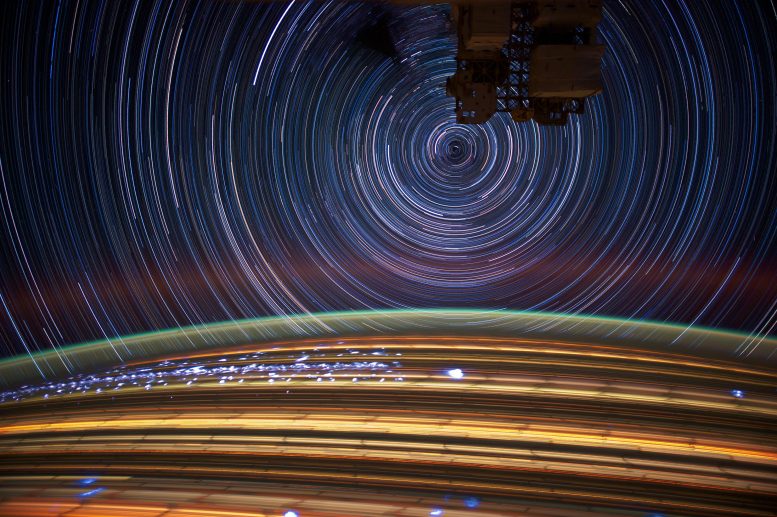
The International Space Station (ISS) is constantly in motion. The football pitch-sized object rotates as it cruises at about 29,000 kilometers (18,000 miles) per hour—so fast that it orbits Earth every 90 minutes. For astronaut photographers on board, that motion has consequences. For one, it makes it challenging to take photos. Even with digital cameras that take pictures within 1/1000th of a second, the Space Station moves so quickly that images can easily lose focus or become distorted. However, the same motion makes it possible to shoot spectacular photos like this one, which was taken by NASA astronaut Don Pettit while he was onboard the ISS in April 2012.
The semifinalist was an image compiled from a series of photographs taken by NASA astronaut Don Pettit while he was onboard the ISS in April 2012. This composite was made from more than 72 individual long-exposure photographs taken over several minutes as the ISS traveled over the Caribbean Sea, across South America, and over the South Atlantic Ocean.
Pettit explained that long-exposure pictures from the Station show star trails as circular arcs, with the center of rotation being the poles of the station. Stars close to the center of rotation make the tight circles near the middle of the image, while stars farther from it make the larger arcs visible along the edges.
“My star trail images are made by taking a time exposure of about 10 to 15 minutes,” Pettit wrote. “However, with modern digital cameras, 30 seconds is about the longest exposure possible, due to electronic detector noise effectively snowing out the image. To achieve the longer exposures, I do what many amateur astronomers do. I take multiple 30-second exposures, then stack them using imaging software, thus producing the longer exposure.”
The image includes many natural and artificial lights that astronauts see while passing over the night side of Earth. On the ground, stationary features like cities appear as pale yellow-white streaks. The thinner, dotted lines with orange hues are likely caused by small fires burning in South America.
Looking toward the horizon, thunderstorms dot the landscape. Many of the compiled frames captured bright white lightning flashes. Above the horizon, a faint green-yellow phenomenon called airglow hugs the upper atmosphere. Look carefully at the image for at least one streak of light that is not aligned with all the others. That is a satellite.
View all 32 images and the competition results.




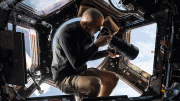
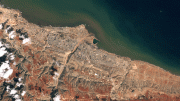

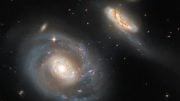
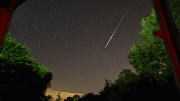
I find the selection of photos very underwhelming, to tell the truth.